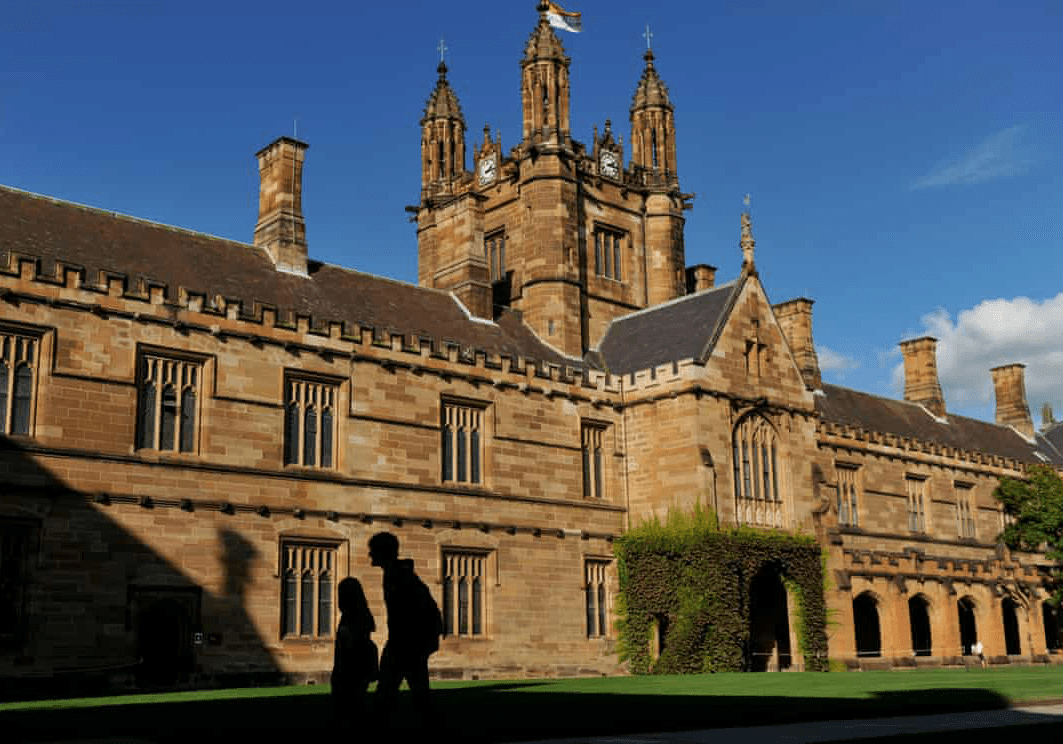A city’s architecture is so often what gives it a unique character. The poppy pastels of Miami or the renaissance symmetricality of Florence come to mind. In Sydney, the gold-hues of sandstone have come to dominate the inner-city’s architectural landscape since invasion. As the needs of Sydneysiders have changed, and as our understanding and attachment to architectural heritage has waned, so has our use of the unique sandstone that characterises the natural makeup of the Sydney basin. Architecture is completely interlinked with history and a region’s environment. Tracing the history of sandstone can offer a glimpse of the changes of Sydney’s history in a way that is often overlooked.
200 million years ago, fine silica sand from Broken Hill washed into the Sydney Basin, and accumulated into a bed that was 200 metres thick. The currents of ancient rivers washed through this sand, leaving the rock with gentle ripples flowing to the south. During the formation of the Great Dividing Range, the now solid rock was folded and lifted up to the surface, albeit unevenly, resulting in the six kilometres of shale and sandstone that currently lie underneath Sydney.
First Nations’ people mined sandstone across the country prior to invasion. In making various stone tools, including those for food preparation, sandstone was crafted into millstones and grinding instruments. Emu Plains, Long Bay, and Maroubra were sites where quartz and sandstone from open cut mines and quarries were used. Sandstone was also the canvas for the engravings of the Eora people, its softness being conducive to the process of carving and ongoing maintenance.
In 1778, settlers began to use sandstone, which was colloquially known as “yellow block” in construction. Yellow block was quickly deemed a high quality building material, as it is highly durable and a good insulator — qualities crucial in a fledgling colonial outpost with a harsh climate. The ubiquity of yellow brick in Sydney’s earliest post-invasion years meant that it lacked its association with inequality that it later attained. The Sydney Morning Herald reported in 1915 that “in the early days … Sydney sandstone was so plentiful and so easily worked that no one thought of going afield” in search of it. Both government elites’ and convicts’ quarters were built of it, as were pubs and storehouses.
Following the gold rushes, and the associated material prosperity, sandstone exploded in popularity. As demand increased, extensive quarries were established in Pyrmont, and on the lower north shore. They were used in the construction of significant government buildings, including the Art Gallery of New South Wales and Sydney Hospital. At the University of Sydney, the Quadrangle, original Fisher library and residential colleges amongst other buildings were built from Pyrmont Sandstone.
Aside from its use emulating colonial architectural styles, the destruction of Pyrmont in the pursuit of sandstone is an early example of the rock’s growing association with inequality. Quarries in Pyrmont were named ‘Purgatory’ and ‘Hell Hole’ by the quarriers, in reference to the horrible conditions they endured.
Eventually the sandstone ran out in Pyrmont, and new building materials became more fashionable. The expansion of residential boundaries following this change largely accounts for the concentration of sandstone in affluent, inner-city suburbs. The anti-sandstone revolution of the 20th century was so severe that governments considered tearing down existing buildings. Plans to tear down the QVB and replace it with a car park were seriously considered as part of a broader post-war affinity with the destruction of nice things and useful infrastructure. In The Rocks, only a union green ban prevented the demolition of sandstone buildings.
While sandstone is still abundant beneath Sydney, little excavated rock is kept intact to be used in maintenance work. The State Government’s Centenary Stonework Program’s leader Ron Powell claims “there is nothing stopping developers at all from just trashing it.” The stonemasons who preserve sandstone are highly specialised, and their numbers are decreasing as young people neglect the pursuit of this ancient trade. As finance minister, Dominic Perrottet planned to outsource this work, in a move that could further accelerate the loss of the skills needed to maintain Sydney’s heritage.
Urban Political Ecology considers society and the environment as ontologically inseparable. As one spots the exposed peaks of the Blue Mountains, peers over the cliffs at The Gap or even attempts to grow something in the back garden, they see how sandstone pervades Sydney’s landscape. While sandstone has been harnessed for millennia and has nestled itself into society, quarrying has historically led to the systematic destruction of the environment in the service of the economy, as the Pyrmont quarriers could attest. It would be great to see more sandstone used in buildings around Sydney, but regardless, in our buildings and in our landscape, yellow block reminds us of the tenuousness of our relationship with nature, in a way that is unique to Sydney and its history.





